Our Wake-Up Call
Our daughter was six when everything hit a breaking point. She couldn’t gain weight no matter how much she ate. She’d throw up after meals, drift into brain fog, forget words mid-sentence. Her anxiety was off the charts, and then it got worse—she started forgetting how to swallow. That’s not something a child should have to think about.
Her iron levels tanked. Her body was turning on itself. Watching your child fade, mentally and physically, while being told by doctor after doctor that “it’s probably just anxiety” is a kind of helpless rage I wouldn’t wish on anyone.
We hit a wall the day she looked up at us and said she’d rather die than feel like this. That was it. That was the line in the sand. I was done being brushed off. I knew something deeper was wrong, and I was damn determined to find someone who would listen.
Eventually, we did. We found a doctor who agreed to run food allergy and sensitivity tests—something I had been asking for over and over. The results were clear. She had celiac disease. It explained everything, and yet it was just the beginning.
We were told to cut out gluten. We did. But it didn’t fix everything—not even close. Her symptoms got slightly better, but she was still inflamed, anxious, foggy, and exhausted. So we kept digging. That’s when we stumbled across Dr. Paul Saladino on YouTube talking about the carnivore and animal-based diet. At first, we thought the guy sounded a little extreme. All meat? Organ meats? Raw liver? It was out there.
But when we started listening—really listening—it clicked. Everything he said lined up with what we were seeing in her body. The constant gut irritation, the autoimmune spiral, the inability to absorb nutrients. The more we learned, the more obvious it became: this wasn’t just about cutting gluten. It was about giving her body everything it needed to repair.
We started slow, but within weeks, the change in her was undeniable. And as we went deeper, we realized something even bigger: both my husband and I were also celiac. It had been hiding in plain sight our whole lives.
Switching to an animal-based diet didn’t just help our daughter—it changed the way our entire family lives, eats, and thrives.
What Is Celiac, Really? And Why Gluten-Free Wasn’t Enough
Celiac disease isn’t just a food sensitivity. It’s an autoimmune condition where even trace amounts of gluten trigger your immune system to attack your own gut lining. Over time, this destroys the small intestine’s ability to absorb nutrients—leading to malnutrition, neurological issues, anxiety, and a long list of seemingly unrelated symptoms.
When we first got the diagnosis, we did what everyone does—we cut out gluten. No bread, no pasta, no “regular” cookies. But we were still eating “gluten-free” packaged foods, oats, and grains like rice and corn, because that’s what the gluten-free world tells you is safe. It wasn’t. Our daughter was still inflamed. Still anxious. Still sick.

Here’s the truth we learned the hard way: grains aren’t human food. They’re animal feed. They were never meant to be a staple in the human diet, especially not for someone with a compromised gut. Oats in particular are marketed as heart-healthy, gut-friendly, and wholesome. But they’re loaded with anti-nutrients like phytic acid, which blocks mineral absorption, and they spike blood sugar like candy. Worse, oats are often contaminated with gluten—even the so-called “gluten-free” ones. For someone with celiac, they’re a slow-burning disaster.
We also had to take a hard look at vegetables. Sounds crazy, right? But plants can’t run or fight back, so they produce defense chemicals—compounds like oxalates, lectins, and saponins—to deter animals from eating them. These chemicals can irritate the gut lining, disrupt digestion, and trigger autoimmune flares. We realized our daughter wasn’t tolerating even the “healthy” stuff: spinach, almonds, kale, sweet potatoes. All of it was making her worse. So we cut it out.
The gut isn’t just a tube that processes food—it’s your second brain. It’s physically connected to your actual brain through the vagus nerve, which sends signals in both directions. Scientists now know the gut has its own nervous system, called the enteric nervous system. It has so much intelligence, it’s been compared to the brain of a golden retriever—emotional, intuitive, responsive.
When your gut’s inflamed, your brain is inflamed. When your gut is calm and nourished, your whole being starts to regulate. For our daughter, healing her gut meant healing her mind, her energy, her personality. And that only started when we stopped feeding her things that were never meant to be human food.
From Plant-Based to Animal-Based: The Hard Pivot
Once we understood that our daughter’s body was in full-blown survival mode, we stopped trying to “balance” her diet the way mainstream nutrition suggests. She didn’t need balance—she needed nourishment, deeply healing, bioavailable food. So we cut the noise and built our meals around what humans actually thrive on: whole animal-based foods.
Here’s what that looks like for us:
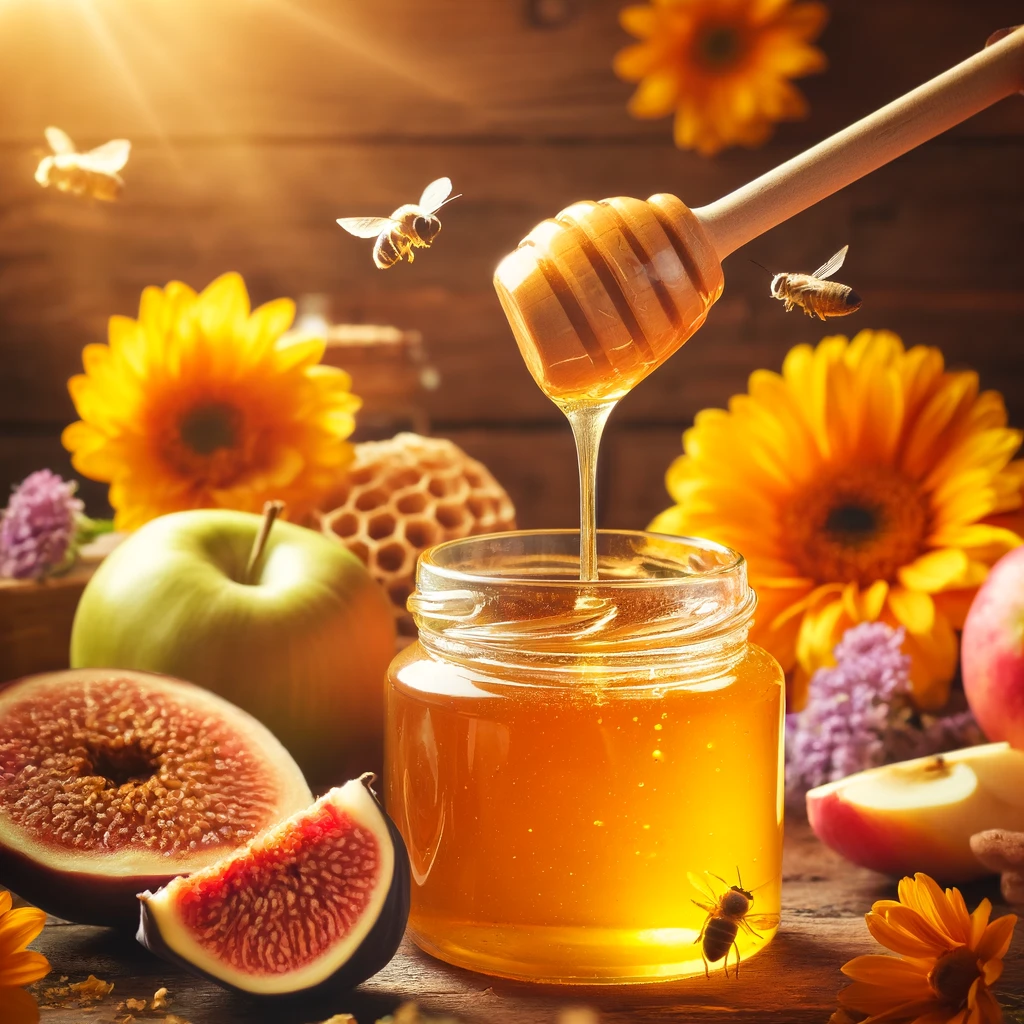
🐝 Honey – Yes, daily. Raw, unfiltered honey is a whole food rich in enzymes, natural antimicrobials, and prebiotics that feed beneficial gut bacteria. We don’t limit it—some days it’s 3, 4, even 5 tablespoons. It soothes the gut lining and supports digestion. For our daughter, it’s become a safe, energizing source of carbs that never causes inflammation.
🥩 Grass-Fed Beef – This is the foundation. Rich in bioavailable protein, B vitamins, iron, zinc, and creatine, all critical for healing. Unlike plant protein, your body doesn’t have to fight to absorb it. We prioritize fatty cuts—her body needs the energy and raw materials to rebuild.
🍲 Bone Broth – We simmer bones for 24–48 hours, pulling out collagen, gelatin, glycine, and minerals that literally seal and repair the gut lining. Think of it like internal spackle for a damaged digestive tract.
🍓 Fruit – Easy to digest, hydrating, full of vitamins, and naturally sweet. We rotate seasonal fruits and pair them with protein and fat for blood sugar stability.
🥛 Raw Dairy & Cheeses – Unlike pasteurized dairy, raw milk contains living enzymes and probiotics that support gut health. Same goes for aged raw cheeses—nourishing, safe, and surprisingly well-tolerated.
🥚 Pasture-Raised Eggs – A complete source of protein, choline, and brain-building fats. Yolks are nature’s multivitamin.
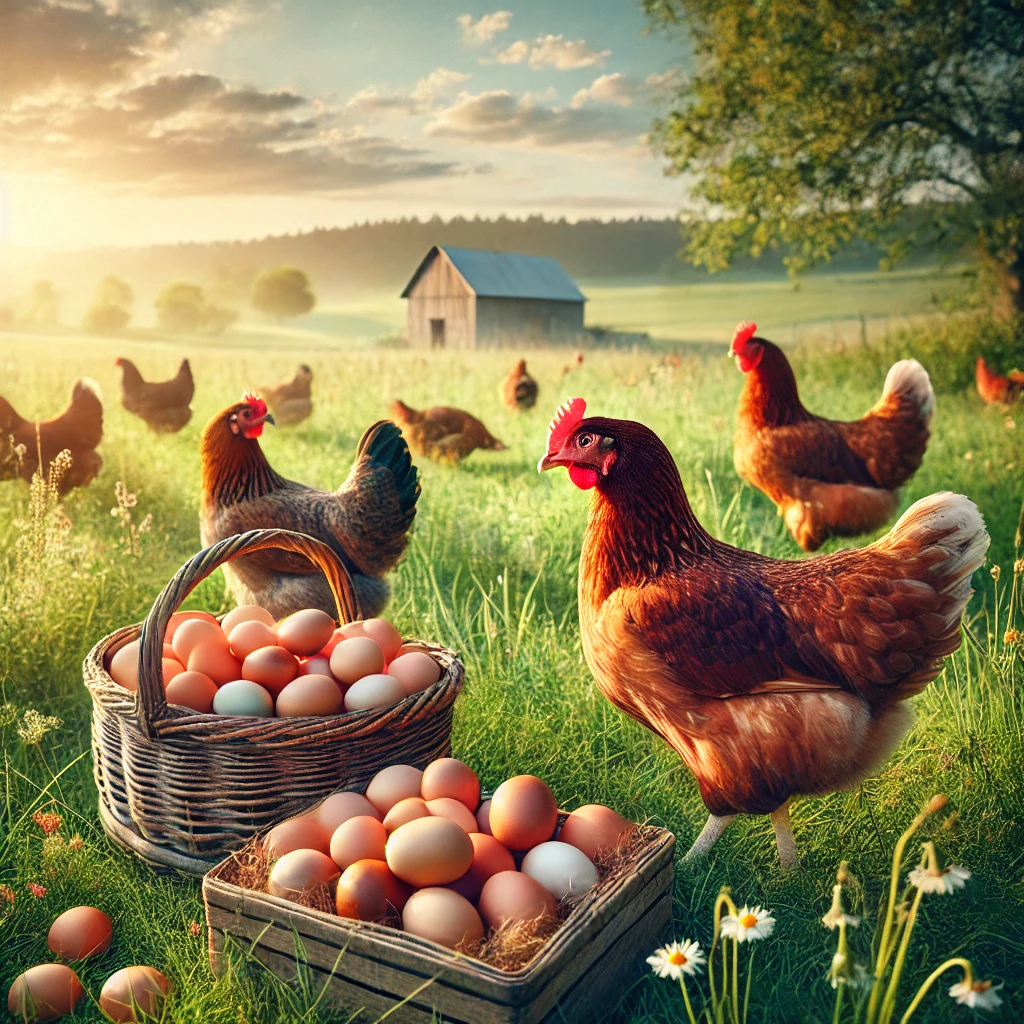
🥛 Kefir – This fermented dairy drink is packed with probiotics that help repopulate the gut. It’s one of our daughter’s favorite “treats.” [I’ve written a deeper dive on kefir’s benefits—check out that article here.]
🥥 Cooking Fats: Coconut Oil, Ghee, Grass-Fed Butter & Tallow – These are stable, anti-inflammatory fats that nourish the gut lining. We use no seed oils—ever.
⚠️ No Seed Oils, Ever – Canola, soybean, sunflower—these are industrial oils that oxidize, cause inflammation, and damage cells. They’re in everything processed. That’s why we don’t eat out. Ever.
If it comes in a bag, we don’t buy it. We cook everything at home, from scratch. We read every single label, because we’ve learned the hard way: you can’t trust marketing. One popsicle—labeled “plant healthy”—contained “natural flavors,” which triggered a five-day flare in our daughter. Brain fog, vomiting, panic attacks. All from one bite.
That’s how sensitive her system is—and that’s how toxic our food system has become.
The Science: Why an Animal-Based Diet Supports Gut Healing
When your gut is damaged—like it is with celiac disease—your body is in survival mode. It can’t absorb nutrients properly, inflammation spreads, and the immune system stays on high alert. Healing starts with removing irritants, but it doesn’t stop there. You also have to rebuild the gut lining, support the microbiome, and calm the immune response. That’s exactly what an animal-based diet does.
Let’s break it down:
🥩 Bioavailability Matters
Most plant foods come with fiber, anti-nutrients, or defense chemicals that interfere with digestion. Even if they have nutrients on paper, your body might not absorb them well. Animal foods—especially organ meats, eggs, dairy, and meat—are bioavailable, meaning your body can absorb and use the nutrients with minimal effort. This matters when your gut is compromised.
Beef, eggs, raw dairy, and liver are rich in:
- Zinc (critical for gut lining repair)
- Vitamin A (regenerates mucosal tissue)
- B12 and choline (nervous system + brain support)
- Collagen and glycine (key amino acids for sealing the gut)
🍲 Gelatin, Collagen, and Bone Broth
When you drink bone broth, you’re giving your gut what it’s made of: collagen. Collagen contains amino acids like glycine, proline, and glutamine—all essential for regenerating the intestinal lining. It’s like feeding your body bricks and mortar to rebuild what celiac has damaged.
🧬 Fats Heal Too
Healthy animal fats—like butter, tallow, and ghee—are anti-inflammatory and support the production of bile, which is essential for digesting fat-soluble vitamins (A, D, E, K). These vitamins all play huge roles in gut health, immune regulation, and tissue healing.
On the flip side, seed oils (canola, soybean, corn) are high in omega-6s and easily oxidize. This leads to chronic inflammation at the cellular level. For someone healing from celiac, it’s like throwing gasoline on a fire.
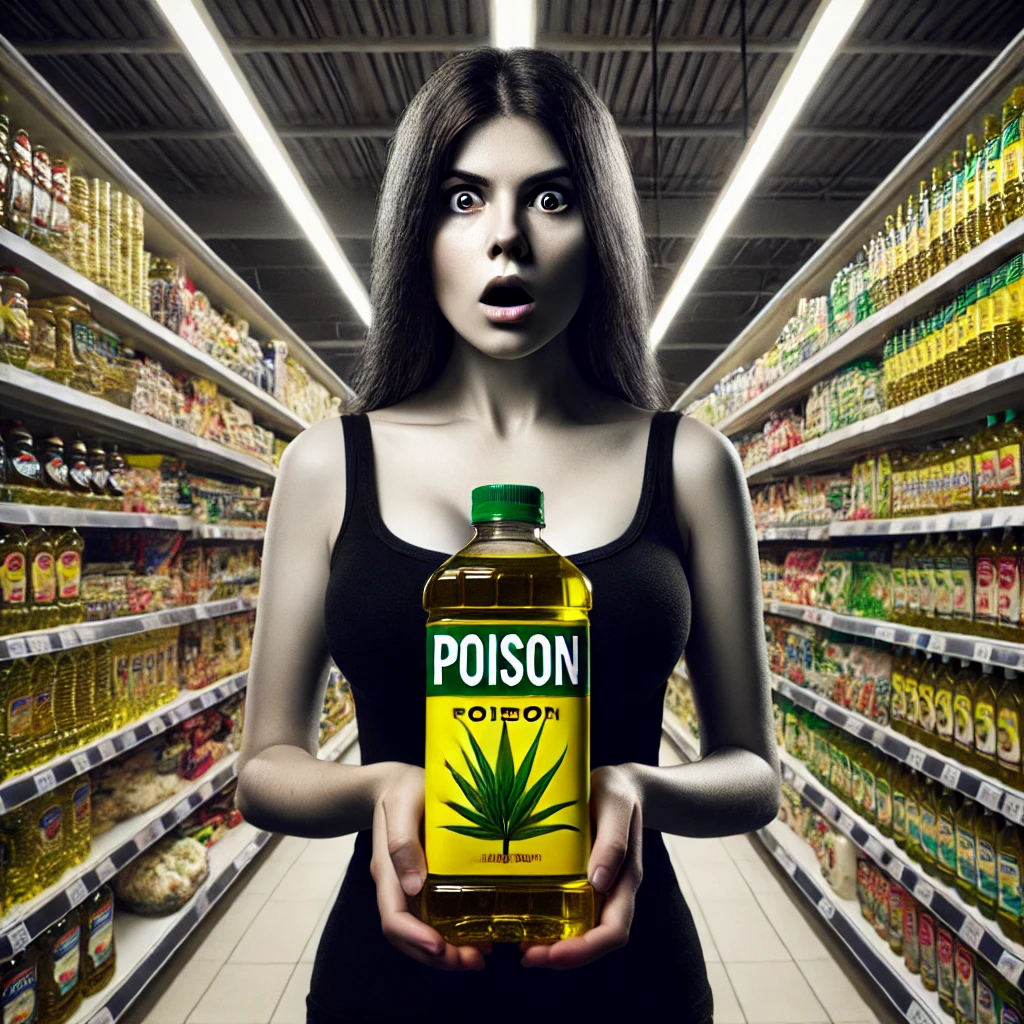
🧠 Gut-Brain Axis: The Second Brain
Your gut and brain are connected through the vagus nerve—a direct, two-way communication channel. What happens in the gut affects the brain, and vice versa. That’s why when our daughter’s gut was inflamed, her anxiety skyrocketed and her cognitive function crashed.
The gut has its own nervous system—the enteric nervous system—with millions of neurons. Some researchers say it has the intelligence of a golden retriever. It’s emotional. It remembers. It reacts. Healing the gut isn’t just about digestion—it’s about emotional regulation, clarity, and peace of mind.
By switching to an animal-based diet, we weren’t just feeding our daughter’s body—we were giving her brain and nervous system the chance to finally calm down and start functioning the way they were meant to.
The System Is Sick—And It’s Making Us Sick
If we hadn’t figured out what was really wrong with our daughter, we would’ve lost her. Not metaphorically—literally. Her ferritin levels were critically low. At that point, the body starts shutting down. Children can go into seizures, fall into comas, and yes, die. That was the path she was on. And the scariest part? No one in the medical system seemed to be alarmed—just more prescriptions, more deflection, more “maybe it’s anxiety.”
But we knew better. We knew this wasn’t just in her head. Her body was breaking down. And the truth is, our story isn’t rare. The only difference is: we caught it in time. Most families don’t. Not because they don’t care—but because they don’t realize the danger is right in front of them, on their plates.
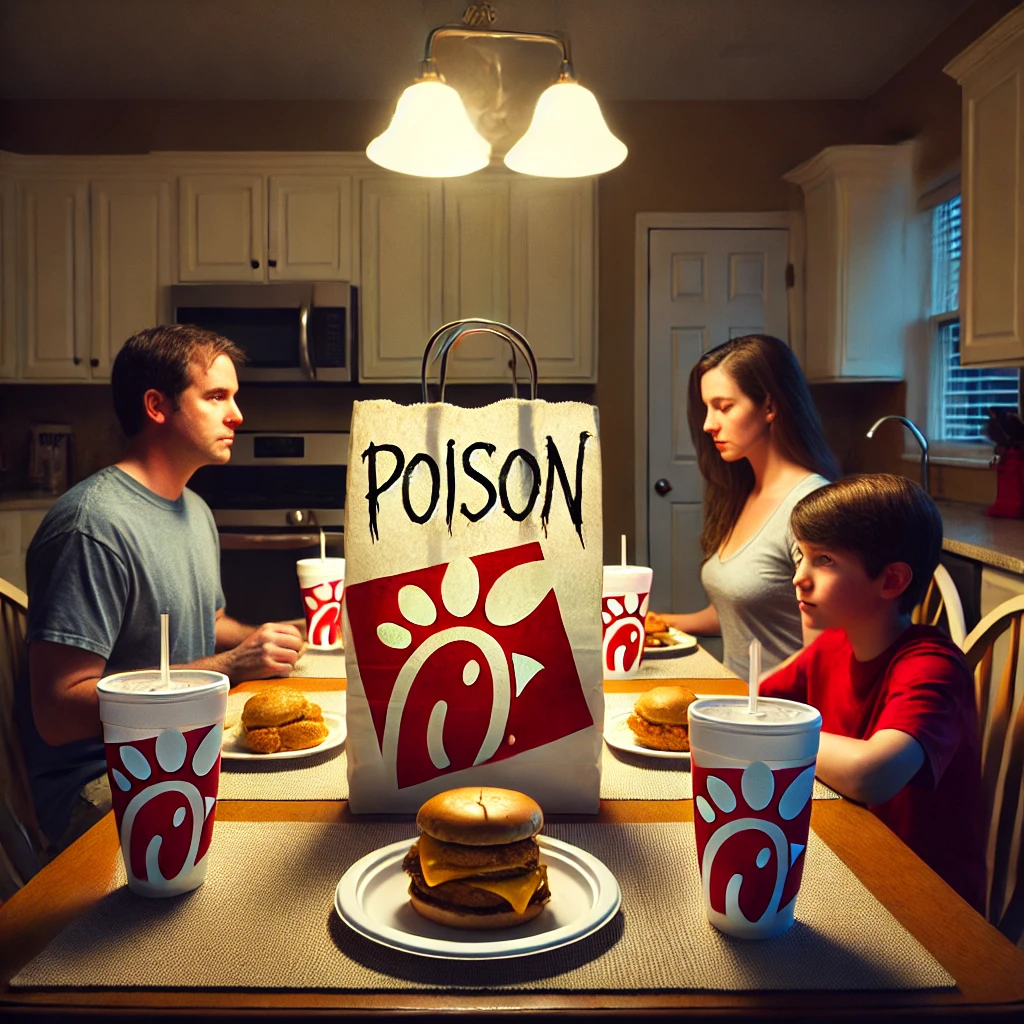
We live in a country where kids are fed ultra-processed, chemically flavored, seed oil-soaked, sugar-loaded food every single day—and we call it “normal.” School lunches, birthday parties, snacks in bright packaging at eye level. Most of it is marketed as “whole grain” or “heart healthy” or “plant-based.” But it’s not real food. It’s factory-made fuel for chronic illness.
The food system is broken. And it’s not by accident—it’s by design. Cheap grains, subsidized corn and soy, and shelf-stable snacks have replaced the nutrient-dense animal foods our ancestors thrived on. Now, kids eat more seed oils than saturated fat, more artificial colors than real minerals, and more sugar in a week than our great-grandparents ate in a year.
And then we wonder why they’re anxious. Why they’re tired all the time. Why they have eczema, ADHD, constipation, allergies, autoimmune diseases. Why they can’t focus in school. Why so many kids are on meds before they hit double digits.
This isn’t a genetics issue—it’s a food issue.
Most Americans are being slowly poisoned by what’s in their pantries. And they don’t even know it because they trust the system. They trust the labels. They assume “natural flavors” must mean natural. We learned the hard way that it can mean anything but. Our daughter was glutened by one popsicle labeled “plant healthy” because the “natural flavors” weren’t safe. That one bite led to five days of vomiting, brain fog, and anxiety. One bite.
We’re not writing this because we think we’re better than anyone. We’re writing this because we nearly lost our child. And we got lucky. We paid attention. We fought for answers. We changed everything about how we eat.
If you’re a parent reading this: please look at your child’s plate. Read every ingredient. Question every label. Ask yourself who benefits from feeding your family food in a box.
It’s not too late to wake up. But one day, it might be.
A Look Into Our Daily Routine
Our days don’t start with chaos or screens. They start with sunlight—and intention.
First thing in the morning, we step outside and soak in natural light for at least 15 minutes. Just that small window of sun exposure helps regulate the circadian rhythm, lowers cortisol, and tells the body it’s time to wake up and function. It sets the tone for energy, mood, digestion, and even hormone balance for the rest of the day. In Missouri, winters can be brutal, so when the sun’s hiding, we use red light therapy—or a good old-fashioned chicken heat lamp. Our kids sit in front of it, cozy and glowing, working on crossword puzzles or simple “wake up” activities at the kitchen table. They love it—and it works.
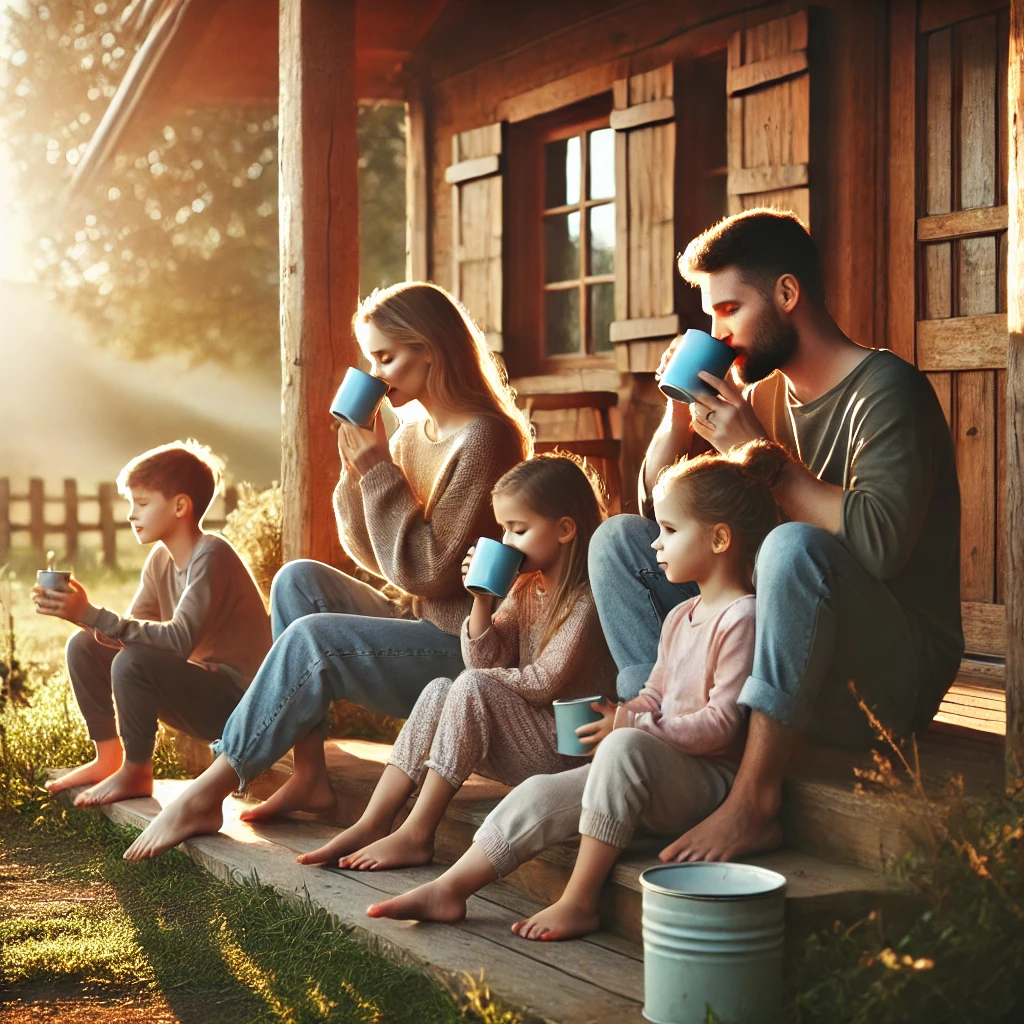
With that light, we all drink a large glass of clean spring water to rehydrate after sleep.
Breakfast is slow-cooked lamb that’s been simmering overnight with a few carrots, or a bowl of plain yogurt topped with collagen powder and raw honey. We don’t complicate it—just real food that the body recognizes. A big glass of raw milk is often our mid-morning treat, paired with a Friday-only “fat bomb” made from coconut oil, coconut butter, and cocoa powder. Coconut oil is rich in medium-chain triglycerides (MCTs), which support brain function and are naturally antimicrobial—great for the gut.
Mid-afternoon, we sip warm bone broth. Then it’s a grass-fed burger with sour cream and honey—no bun, no ketchup. We avoid nightshades like tomatoes, potatoes, and eggplant, which contain plant defense chemicals that trigger inflammation in our bodies. They’re gone for good.
Dinner is often steak seared in grass-fed butter with mango or dragon fruit on the side. Apples are always around, along with seasonal fruit. We follow the Clean 15 and Dirty Dozen list, choosing organic for the most pesticide-heavy items to avoid gut-disrupting toxins.
We drink lots of spring water, fresh-pressed apple or pineapple juice, and kefir. Some nights, we turn kefir into ice cream—gut health that feels like dessert.
This isn’t a diet. It’s the foundation of our life. And we never get tired of it. It’s simple. It’s nourishing. It’s freedom.
The Results We Can’t Ignore
Within weeks of switching to an animal-based lifestyle, the changes in our daughter were undeniable. Her energy came back first. The dark circles under her eyes started to fade. She stopped throwing up after meals. Her brain fog lifted. She started laughing again—really laughing. That’s when we knew we were on the right track.
Her anxiety, which once ruled her days, began to melt away. She could sleep through the night. She wasn’t afraid to eat anymore. The girl who once told us she didn’t want to live like this was now running, playing, and asking for second helpings of steak and mango. Her body was finally absorbing what it needed to grow and thrive.
Her lab work began to improve. Ferritin levels came back from dangerous lows. Digestion normalized. Panic attacks vanished. And her ability to focus returned—like someone flipped a switch in her brain. It wasn’t a supplement or a medication that did it. It was food. Real food.

But it wasn’t just her. As we cleaned up the pantry and shifted our meals, we noticed it in ourselves too. My husband and I both have celiac, undiagnosed for years. For the first time in our adult lives, we felt steady. Clear-headed. Calm. Strong. No more crashes. No more fog. No more bloating or pain we had just accepted as “normal.”
The more consistent we became, the better the results. And now, years later, this is simply who we are. No one is medicated. No one is sick. Our meals are our medicine—and our joy.
People ask us all the time if it’s hard. But once you’ve watched your child suffer—and then come back to life—there’s no going back.
This isn’t a trend. It’s the truth. And the results speak for themselves.
Challenges, Criticism, and What We’ve Learned
Living this way hasn’t always been easy—not because of the food, but because of people’s reactions to it.
We’ve had family question our choices. We’ve been told we’re “too extreme.” We’ve had doctors look at us sideways when we say we don’t eat grains, seed oils, or processed foods. But we also know what’s at stake. We watched our daughter fight to survive—and we’re never going back.
We homeschool, which has been a huge blessing. We don’t have to deal with the daily stress of school lunches or classroom snacks. But we still go out—zoo days, homeschool co-op, skating meetups—and yes, we bring our own food every time. We pack homemade snacks, real meals, and always have something nourishing on hand. No one is ever left out. We just do it our way.
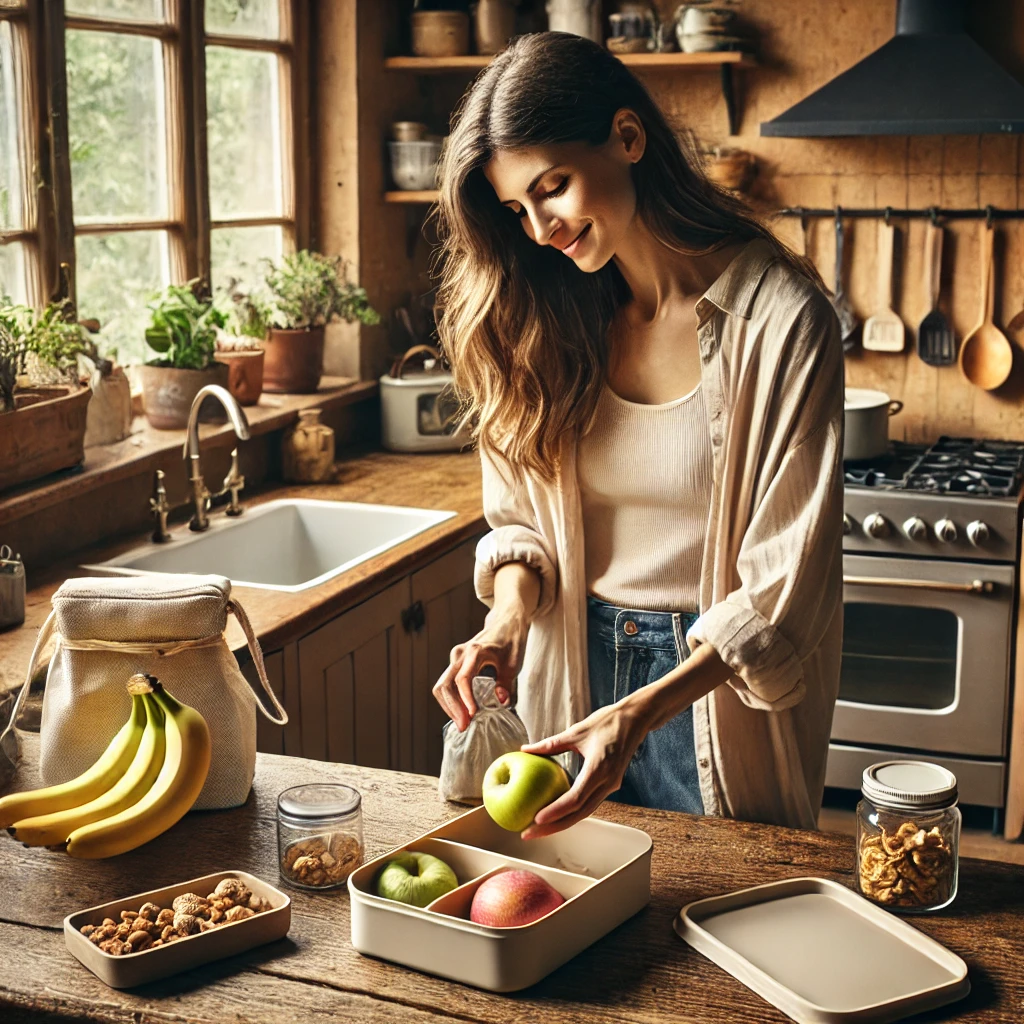
The hardest part isn’t the logistics—it’s the explaining. It’s the social pressure to conform. The weird looks when you say no to “just one treat.” But we’ve turned those moments into something bigger—teaching our kids how to own their choices and stand strong in a world that pushes easy over healthy.
We’ve also learned how to read labels like detectives. We question everything. Because one wrong ingredient—one hidden source of gluten or artificial “flavor”—can send our daughter into a spiral. “Probably fine” is not good enough for us.
And the truth is, most people don’t question what they’re eating until they have to. But you can choose better before the damage is done.
It might not be popular. But it’s worth everything.
Final Thoughts: Trusting Your Gut—Literally
If you’re a parent, it’s time to stop being lazy and start looking in your pantry. What’s in there might be the very thing making your child sick. This isn’t about guilt—it’s about action.
You don’t need a medical degree to feed your family real food. You need awareness, commitment, and the guts to go against the grain. Literally.
We’re not special. We’re not perfect. We just refused to accept that sick was normal. Our daughter is living proof that change is possible. Our whole family is the proof.
This life? It’s work. But we wouldn’t have it any other way.
Let’s reclaim what is rightfully our’s in this digital noise we live in. Join us in this exploration of how deep the rabbit hole actually goes.
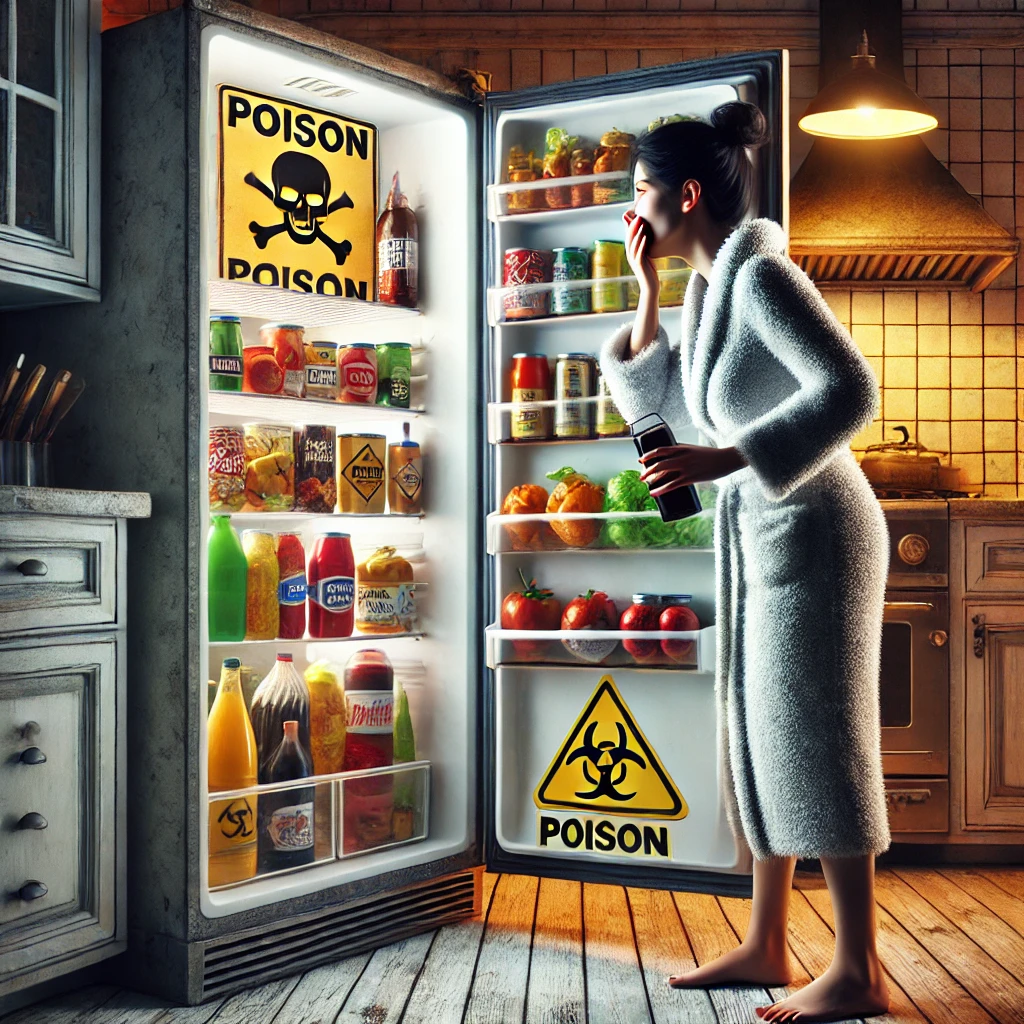
No responses yet